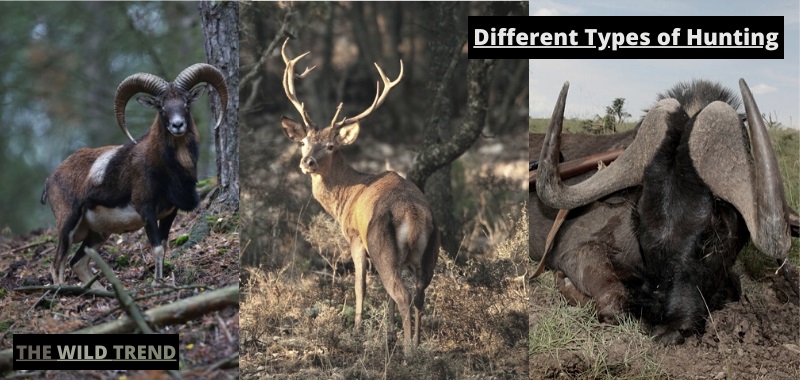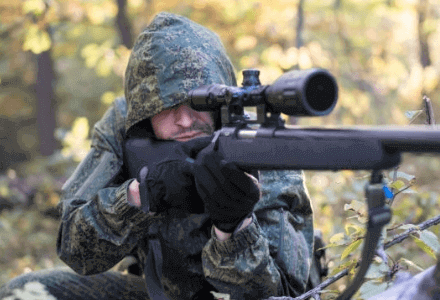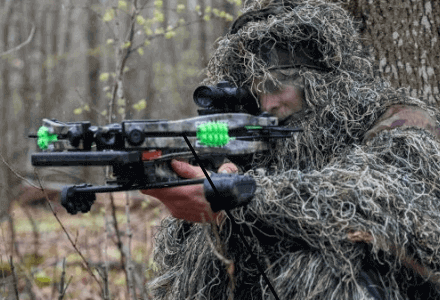Hunting is a multifaceted and time-honored tradition with deep roots in human history. Whether you prefer hunting solo or in a group, with or without firearms, your approach to hunting reflects your unique style. But what type of hunting do you envision for yourself on your hunting grounds? The answer to this question will guide you toward the ideal property for your needs.
Each form of hunting comes with its customs, techniques, and challenges. From tracking game in dense forests to waiting patiently in open fields, every experience is different. The key is to choose the type of hunting that resonates with you. To help you decide, here’s a quick look at some of the most common hunting styles.
Different Types of Hunting
The type of hunting you practice in your country significantly influences the selection criteria for the perfect hunting property. Factors like surface area, terrain, and the presence of water bodies can become more or less important depending on your preferred hunting style.
While hunting with a bow is a popular and rewarding method, it’s just one of many. Other hunting techniques, each with its appeal, include:

Stalking hunting
Stalking hunting, also called “silent” or “individual hunting,” involves quietly tracking an animal to approach it as closely as possible for a kill. In contrast, lookout hunting is done from a watchtower, where the hunter remains hidden and waits for the game to come into range.
This method requires long observation of the animal’s behavior and is best suited for experienced, solitary, and patient hunters. They search for game by carefully traversing its territory, often using binoculars to study it from a distance. It’s not typically recommended for beginners.
Group hunting
Group hunting, also known as community or joint hunting, involves multiple members of a species working together to capture prey. The level of coordination varies depending on the species. For instance, some ants exhibit minimal cooperation when attacking rival colonies, while species like wolves (hunting elk), chimpanzees (hunting other monkeys), and lions display highly coordinated tactics.
This cooperative hunting allows groups to target larger prey and broaden their options compared to solitary hunters. For example, while individual wild dogs can hunt gazelles, only in groups can they take down adult wildebeest. However, there is still debate about whether group hunting actually offers a higher per capita profit than solitary hunting, as it’s unclear which factors are accounted for in cost-benefit analyses.
Different types of animal hunting
There are many hunting methods, each suited to different types of animals and vary based on the equipment used, the type of game being pursued, and the location of the hunting area.
Mouflon hunting
Hunting mouflon can be challenging due to their keen eyesight. This game species can be found in various regions of the United States and Europe, though it is not widespread across all areas. Mouflon hunting is particularly popular as a trophy hunt in countries like Hungary and the Czech Republic.
Deer hunting
Deer hunting is widely practiced, with roe deer being the most commonly hunted species in Germany. This small game, classified as cloven-hoofed and belonging to the deer family, thrives across the country as a typical cultural successor. Deer hunting is often timed with their seasonal movement patterns. A popular method for hunting roe deer is high-seat hunting, while stalking can also provide a varied and rewarding experience.
The best time to hunt deer is during the rutting season, in September or October, when the woods resonate with the roars of the males. These mostly diurnal animals can be attracted using deer calls, which imitate the sound of a rival,
- Recommend to Read: 12 Pro Tips: Deer Hunting with a Crossbow
Wild boar hunting
Wild boar hunt is diverse, with specific strategies tailored to this intelligent game species. Most sows are hunted from behind, and the approach differs significantly from roe deer hunting, which usually occurs at night.
Wild boars are known for their quick learning abilities and lack of territorial behavior, making them challenging to hunt. To effectively target them, hunters often use decoy species and feeding stations to lure the boars to a specific area. Essential equipment for any wild boar hunter should include at least one trail camera to monitor their movements and activity patterns.
Fox hunting
Fox hunting regulations vary by federal state, allowing for different hunting times. It’s essential to have a basic understanding of fox hunting, as this species can transmit various diseases. Moreover, managing the fox population is crucial for the survival of other wildlife.
Winter fox hunting is especially popular due to the thick fur that the fox develops during this season, which can be used for various purposes. To increase the chances of success, hunters can create a baiting area, but it’s important to adhere to the legal regulations specific to each federal state.
Crow hunting
Crow hunting offers a diverse range of techniques, with many hunters utilizing camouflage to blend into their surroundings. To enhance success, it’s important to ensure that your hands, face, and weapon are well-camouflaged. Using artificial crow decoys as lures can significantly increase the chances of a successful hunt.
Duck hunting
Duck hunting is one of the most popular hunting activities, traditionally practiced from a duck line during evening migrations. Good equipment is essential for success; hunters should ensure their blinds are well-camouflaged, and they should also be concealed from head to toe. Furthermore, mostly smaller drives are often organized in this type of game.
Pigeon hunting
Pigeon hunting is quite intriguing, especially since breast meat is considered a valuable game. Generally, hunters aim for pigeons during individual hunts, often using decoys to attract them within range for a successful shot.
Different types of hunting mission
Not all animal species can be hunted, and hunters must adhere to the regulations in place. Failing to comply with these laws can result in prosecution for poaching.

Small game hunting
Small game hunting involves pursuing animals like rabbits, partridges, and pheasants, often using a pointer dog. The dog’s role is to detect the scent of the game, approach it, mark its location, and hold its position until the hunter arrives.
There are various methods for hunting small game, including hunting in front of the hunter in forests or open fields. Historically, during the Middle Ages, small game hunting was accessible to the general population, while big game hunting was reserved for nobles.
Big game hunting
Big game hunting refers to the hunting of medium and large-sized animals: deer, doe, roe deer, or even chamois. It is possible to track animals that belong to the big game category using strides (footprints). Big game hunting is often accompanied by a pack of dogs that support and help the hunter to shoot an animal.
There are many hunting methods for big games: hunting on the lookout, beating (this hunting method is the most common for hunting big games in France), silent push, etc.
Mountain hunting
Hunting game in the mountains is one of the most beautiful hunting techniques in the modern age. Whatever the destination where the game is coveted, powerful emotions are always there. It is a sport hunting that involves some precautions to experience it intensely but serenely.
Mountains remain rugged and potentially dangerous terrain where weather conditions can change quickly. The higher you go, the more the temperature decreases and the more the wind at altitude is likely to increase. This results in significant evaporation and therefore cooling effect.
The equipment must be functional, comfortable, and light. Even a short mountain excursion at a low altitude requires a few basic pieces. By playing with all the combinations of light, warm, and waterproof pieces, it is possible to cope with all climatic situations.
Hunting without gun
As the name implies, this mode of hunting does not involve firearms. Instead, hunters use bows and arrows and are often accompanied by dogs or raptors to assist in capturing the game. This type of hunting also includes techniques like unearthing, as well as snooping, where a ferret is introduced into rabbit burrows to flush them out.
Let’s see it in detail…
The art of falconry
Falconry is a type of hunting that utilizes birds of prey, such as falcons, hawks, and buzzards, as hunting aids. There are two main styles of falconry: high-flying and low-flying. For low-flight hunting, a hunting area of several dozen hectares is required, while high-flight hunting necessitates several hundred hectares to fit the bird’s range and hunting behavior.
Bow hunting
Bow hunting can be conducted through various methods, including approach, lookout, beat, and ground hunting. This mode is especially suitable in peri-urban areas and regions where using firearms may be unsafe. It is an efficient, silent, and challenging form of hunting that demands extensive knowledge of both the terrain and the animals.
Since you need to get within a few meters of the game before shooting an arrow, bow hunting requires significant effort and self-control before, during, and after the shot. Participation in training is essential for successful bow hunting, and you must obtain a specific permit to practice it in your hunting area.

The trapping
Rabbits, foxes, and crows are among the species that can be hunted using traps. Legislation classifies traps into five categories. For category 2 traps, hunters must obtain authorization from the prefecture. Before setting traps on your hunting grounds, it’s essential to attend a brief training course to ensure compliance with regulations and safe practices.
Hunting with trained animals
Hunting dogs are now trained in various subjects, covering both pre- and post-shot scenarios. Especially after a shot or an incident involving wildlife, it is crucial to minimize the animal’s suffering caused by these external factors.
Blood research
This hunting method focuses on tracking injured games and is assisted by blood-tracking dogs, which use their keen sense of smell to locate the wounded animal, sometimes over several kilometers. This approach is primarily used to find the injured animal and reduce its suffering.
Conclusion
Hunting is a popular activity in the world. It has already been included in the UNESCO list of cultural heritage. However, this activity is highly regulated by Federal Law. It is only authorized at certain times and is subject to getting a hunting license.
Going hunting requires suitable equipment: military jackets and resistant pants are recommended. You must be careful when purchasing hunting shoes. They must protect the soles of the feet from the roughness of the ground thanks to a thick sole and maintain the ankle well. If you enjoy hunting activities in winter, check out our cold weather hunting boots buyer’s guide.
Thanks for reading!
Have any questions? Leave a comment below & I’ll answer them.
